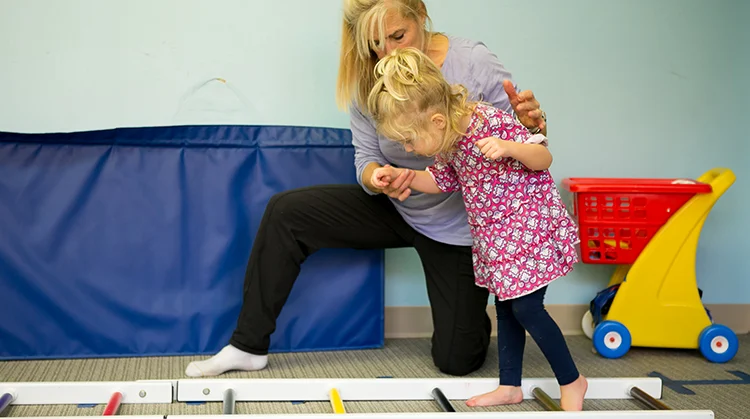Developmental Coordination Disorder (DCD), also known as dyspraxia. Dyspraxia is a neurodevelopmental disorder that affects movement and coordination.
It typically manifests in early childhood and persists into adolescence and adulthood. Children with DCD may have difficulty with tasks such as tying shoelaces, catching a ball, or writing neatly. Despite normal intelligence and opportunities for learning and practicing skills, individuals with DCD struggle to coordinate their movements effectively.
This can impact daily activities, academic performance, and social interactions, posing significant challenges in multiple aspects of life. Early identification and appropriate intervention are crucial in helping individuals with DCD manage their difficulties and improve their quality of life. Follow us here at Attention Deficit/Hyperactivity Disorder
Signs & Symptoms
1. Motor Skills Difficulties
- Poor coordination (e.g., difficulty with balance, clumsy movements).
- Problems with motor planning (e.g., difficulty in organizing and executing movements).
- Awkward or unsteady gait.
- Difficulty with fine motor skills (e.g., tying shoelaces, using utensils).
2. Academic and Daily Life Challenges
- Poor handwriting and drawing skills.
- Difficulty with tasks requiring precision (e.g., cutting with scissors).
- Problems with tasks that involve sequential steps (e.g., getting dressed).
- Challenges in physical education activities and sports.
3. Social and Emotional Impact
- Frustration and low self-esteem due to difficulties in performing tasks that peers handle effortlessly.
- Avoidance of physical activities and sports.
- Potential for social isolation and bullying.
Associated Features Supporting Diagnosis
Normal Intelligence
Individuals with DCD typically have normal cognitive abilities.
Onset in Early Childhood
Symptoms often manifest in early childhood when motor skills are expected to develop.
Persistence
Symptoms of DCD persist into adulthood and adolescence.
Impact Across Settings
Difficulties are evident across different environments (home, school, social settings).
Prevalence & Demographics
Prevalence
Determining the exact prevalence of DCD can be challenging due to varying diagnostic criteria and methodologies used in different studies. However, available research suggests that:
- Approximately 5-6% of children meet the criteria for DCD.
- This makes it one of the most common neurodevelopmental disorders in children.

Demographics
While DCD can affect individuals of all backgrounds, certain demographic factors have been observed:
- Gender: DCD is more prevalent in boys than girls.
- Age: The condition is typically diagnosed in childhood, but symptoms can persist into adulthood.
- Socioeconomic status: Children from lower socioeconomic backgrounds may be at a higher risk due to factors like limited access to early intervention services.
Risk Factors
While the exact causes of DCD are still under investigation, several factors have been identified as potential risk factors:
- Prematurity: Babies born prematurely are at a higher risk of developing DCD.
- Low birth weight: Babies born with a low birth weight may also be at increased risk.
- Genetics: A family history of DCD or other learning difficulties can increase the likelihood of developing the condition.
- Male s6x: Boys are more likely to be diagnosed with DCD than girls.
- Other medical conditions: Certain medical conditions, such as cerebral palsy or autism, can be associated with DCD.
Prognostic Factors
1. Severity of Symptoms
Those with more severe coordination difficulties may experience greater challenges.
2. Early Intervention
Prompt intervention and support can improve outcomes.
3. Supportive Environment
Access to supportive educational and social environments can mitigate impacts.
Functional Consequences
1. Academic Challenges
Poor handwriting, difficulty with tasks involving fine motor skills, and reduced academic achievement.
2. Social Implications
Difficulty participating in sports and physical activities, the potential for peer rejection, and social isolation.
3. Daily Living Activities
Challenges with tasks such as dressing, grooming, and eating independently.

Impact on Daily Life
1. Educational Setting
This may require accommodations such as extra time for tasks, use of assistive technology, or modified physical education programs.
2. Social Interaction
Difficulty participating in group activities, making friends, and feeling socially accepted.
3. Emotional Well-being
Frustration, anxiety, and low self-confidence due to persistent difficulties.
Differential Diagnosis
When diagnosing DCD, it's essential to differentiate it from other conditions that may present with similar symptoms:
- Developmental delays: General delays in motor skills development due to various causes.
- Intellectual disability: Impairments in cognitive functioning affecting motor skills.
- Autism spectrum disorders: Some individuals with autism may also have motor coordination difficulties.
- Muscular dystrophy and other neuromuscular disorders: directly affect muscle strength and coordination.
Comorbidity
1. Learning Disabilities
Difficulties in reading, writing, and math are common.
2. Attention-Deficit/Hyperactivity Disorder (ADHD)
Many individuals with DCD also exhibit symptoms of ADHD.
3. Emotional and Behavioral Disorders
Anxiety, depression, and low self-esteem may develop due to persistent challenges.
Treatment and Management
1. Occupational Therapy (OT)
- Primary treatment: OT focuses on improving fine motor skills needed for daily activities like writing, dressing, and using utensils.
- Skill development: Therapists break down complex tasks into simpler steps and provide practice opportunities.
- Sensory integration: OT may address sensory processing issues that can impact motor skills.
2. Physical Therapy (PT)
- Gross motor skills: PT helps improve balance, coordination, and strength through exercises and activities.
- Functional skills: Therapists work on running, jumping, and ball-handling skills.
- Postural control: PT addresses posture-related issues that can affect movement.
3. Speech and Language Therapy (SLT)
- Oral motor skills: SLT can help with speech clarity and eating difficulties related to oral motor control.
- Social communication: Therapists may address challenges in social interaction and communication.
4. Educational Support
- Accommodations: Schools can provide accommodations like extra time for tests, assistive technology, or preferential seating.
- Individualized Education Plan (IEP): An IEP outlines specific goals and supports for students with DCD.
- Teacher training: Educating teachers about DCD can improve their understanding and support.
5. Psychological Support
- Self-esteem: Addressing emotional challenges related to DCD is crucial.
- Coping strategies: Therapists can teach strategies to manage frustration and anxiety.
Additional Strategies
- Regular exercise: Physical activity can improve overall coordination and fitness.
- Sensory-based activities: Engaging in activities that stimulate the senses can help with sensory processing.
- Visual aids: Using visual cues and instructions can enhance understanding and motor planning.
- Positive reinforcement: Encouragement and praise can boost motivation and self-confidence.
- Peer support: Connecting with other children with DCD can provide valuable social and emotional support.
Important Considerations
- Early intervention: Starting therapy early can make a significant difference in outcomes.
- Individualized approach: Treatment plans should be tailored to the specific needs of each child.
- Family involvement: Parents and caregivers play a crucial role in supporting their child's progress.
- Patience and persistence: Improvement takes time and consistent effort.